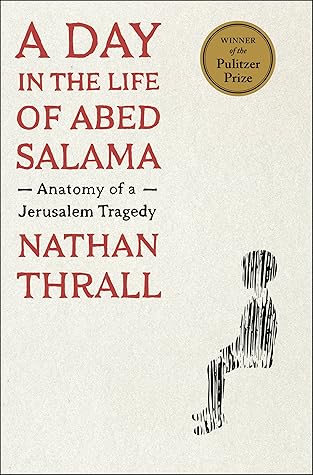More on this book
Community
Kindle Notes & Highlights
Read between
January 27 - March 20, 2025
The town’s natural pool and spring was turned into an Israeli nature reserve, which was free to the settlers of Anatot but charged admission to the people of Anata.
Especially among the elites, the hijab was less commonly seen.
THE FIRST INTIFADA broke out in December 1987, a year and a half after Abed finished high school. It began as a series of spontaneous protests that erupted when an Israel Defense Forces semitrailer collided with a station wagon in Gaza, killing four Palestinian workers. The protests spread, fueled by years of anger at what Israel’s defense minister called an “iron fist policy.”
Bringing Abed into the DFLP was a way for Abu Wisaam to protect him. Rife with collaborators, Palestine had to be one of the most thoroughly penetrated societies in the history of foreign occupation and colonial rule. In the Democratic Front, at least, Abu Wisaam knew who could be trusted.
He handed out five Jordanian dinars to each young activist, enough for a pair of fresh white Nikes, the better to run in when Israeli bullets started flying. Abed took the money, but when Abu Wisaam found out, he forced him to return it right away. He knew it was a ruse: the cash had come from the Israelis, who wanted to see which of the shabaab were involved in the protests and who was susceptible to being bought. Every one of the boys who accepted the money was later arrested, taken from his home by Israeli soldiers in the middle of the night. Thanks to Abu Wisaam, Abed was spared.
INFIGHTING AMONG PALESTINIANS was one of the harshest aspects of the intifada, and it was more widespread than anyone cared to admit.
Israel often arrested its own informants, so that they could avoid suspicion and also continue to gather intelligence from inside the jails.
The plainclothes captains of Israel’s intelligence service, the Shabak, tortured him in the usual method, known as shabih, a reference to the stretching of the prisoners’ arms. A filthy, putrid sack was placed over his head, and his hands were shackled to a pipe high above him so that only his toes touched the ground, pulling his limbs as if on a vertical rack.
It was easier for Israel to control the inmates by giving some autonomy to the factions, allowing each to run its own tent.
every Palestinian was a sort of prisoner, from the youngest child to the PA president, who also needed Israel’s permission to come and go.
the intifada was the culmination of years of frustration with the Oslo process, which hadn’t given Palestinians freedom, independence, or an end to occupation. Nor had it put a stop to the expansion of the settlements, whose population had ballooned by more than 70 percent in the years since the first agreements were signed.
Oslo had furthered Israel’s goal of holding on to maximal land with minimal Palestinians on it. The agreements had fractured the West Bank into 165 islands of limited self-government, each one surrounded by a sea of Israeli control.
Worse than seeing a dead person, Bentzi thought, was watching a family crumble before you. Those people never forgot his face, the face of the angel of death.
In February 1994, a Brooklyn-born religious settler, Baruch Goldstein, murdered twenty-nine Palestinian worshippers in Hebron. Significantly, he chose to do it on Purim, the holiday commemorating the biblical story of the Jews of Persia foiling a plot to destroy them and then killing “all their enemies with the stroke of the sword, and with slaughter, and destruction.” That year, Purim fell on the third Friday of Ramadan.
After the Goldstein massacre, the Jews of Hebron roamed free while its victims, the Palestinians, were subjected to day and night curfews, home raids, new checkpoints, the closure of a main market and several mosques, and prohibition from travel on the sterile roads. The Purim bloodshed had consequences well beyond Hebron, leading, as it did, to the first bus suicide bombing, claimed by Hamas in retaliation.
There was only one city school on their side of the wall, in a former goat pen. The shortage of classrooms—more than two thousand were lacking in East Jerusalem—was so bad that pupils were forced to study in shifts. There were children at the city schools who still couldn’t read at age nine. More than a third of the Palestinian students in Jerusalem dropped out before the end of high school.
Some of the teenagers were taking drugs. The most popular was “Nice”: marijuana, tobacco, or other herbs covered in chemicals—pesticides, acetone, ether, rat poison—that gave off a high.
Parents who could afford it put their children in private schools, which were largely unregulated.
These teens were living through a period of relative quiet. Some of them were too young to remember the violence of the 1990s and the Second Intifada, yet they seemed to be more racist than older generations. Arik wanted to explore why Israeli youth might feel greater hatred than their elders. He believed the story would hold up a mirror to Israeli society.


